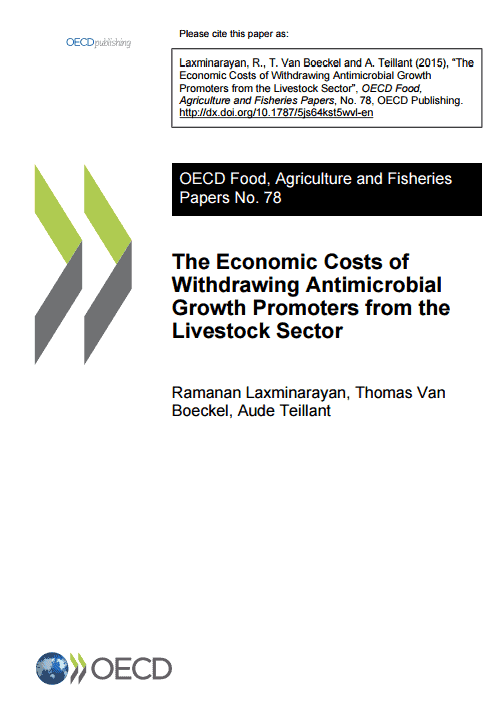February 22, 2015

The Question
What is the economic value of antimicrobial growth promoters (AGPs) to producers and consumers in the OECD countries? What are the potential effects of restricting AGPs on livestock production globally?
What we found
We examined the volume of antimicrobials used in the animal industry worldwide in 2010 and subsequently estimated the projected values for 2030. The growth response to AGPs appears to be small in optimized production systems, suggesting that the economic impacts of a ban on AGPs could be limited in high-income industrialized countries but potentially higher in lower income countries with less developed hygiene and production practices. With no major changes in policy, global consumption of antimicrobials in food-producing animals is projected to rise by two-thirds (67%) by 2030, with the majority of that increase occurring in emerging economies where the demand for livestock products, especially poultry, is growing fastest.
Why it matters
Antimicrobial growth promoters (AGPs), in use for livestock for over 60 years, increase the risk of antibiotic resistance in the pathogens and normal flora of farm animals, thus increasing the risk of transmission of antibiotic resistant bacteria to humans through consumption. In food producing animals, antimicrobials are typically used for three purposes: therapeutic reasons (cure a disease), prophylactic reasons (prevent a disease) and as growth promoters (administration of sub-therapeutic quantities of antimicrobials to increase animal growth rates and to improve feed efficiency). Studies like this are effective in informing policy when establishing best practices and detailing guidelines.
This report focuses on the specific issues of the economic value of antimicrobial growth promoters (AGPs) to producers and consumers. If productivity gains from AGPs are large, it would place a higher burden of proof on linking AGPs with antimicrobial resistance in humans. If, however, productivity gains are relatively small, then policy decisions to scale back AGPs could be easier to implement. While productivity gains are relatively small and thus policy decisions to scale back AGPs should not face strong opposition on economic grounds, public and animal health reasons are sufficient reasons alone to reduce AGP use.

